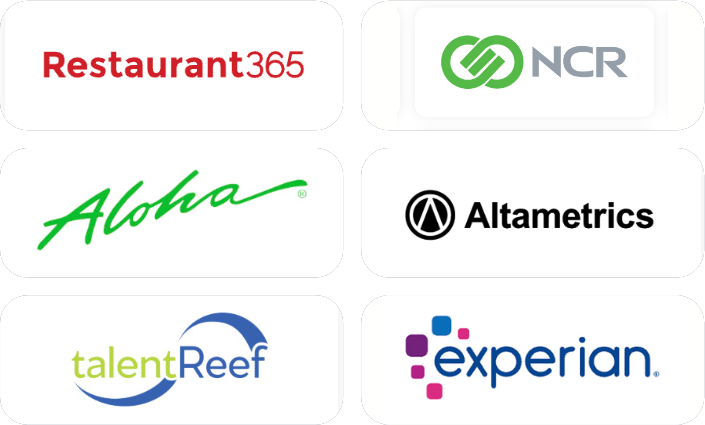Running a business can be daunting because of all the moving parts. If you have employees, then managing payroll can become a burden. As an employer you may have common payroll questions for beginners like, “What is employee classification?” or, “What is the difference between exempt and non-exempt employees?”
This guide will simplify payroll for beginners.
Payroll 101: What is payroll?
A simple definition of payroll for beginners is the sum of all wages and salaries a company pays its employees during a specific time frame. Payroll usually excludes freelancers or contractors, but you must know how to classify your employees. You must also decide on a payroll management system to establish your payroll policy.
What are the different types of employee classifications?
Employee classification for employers pertains to how businesses categorize their workers based on the nature and terms of their employment.
- Full-time employees: It’s your responsibility to offer a comprehensive set of benefits, such as health insurance, retirement contributions, and paid time off to full-time employees. You also handle tax withholdings and payments for them.
- Part-time employees: Part-time employees are entitled to certain benefits, but not all benefits offered to full-time workers may be available. Tax obligations still apply regardless of employment status.
- Temporary/seasonal employees: You might hire temporary or seasonal employees during peak times or for specific projects. You might provide different benefits than permanent staff but still have tax and legal obligations.
- Independent contractors: You have no obligation to withhold taxes or offer benefits and protections for them.
- Interns: Whether paid or unpaid, interns should receive from you valuable experiences through training opportunities. Moreover, complying with labor laws when offering unpaid internships is absolutely essential.
What is the difference between exempt and nonexempt employees?
Exempt employees are salaried professionals. They are exempt from the overtime provisions of the Fair Labor Standards Act (FLSA) due to their job duties and compensation. Employers have no obligation to pay overtime to these employees, regardless of how many hours they work in a week.
Nonexempt employees are obliged to follow the overtime protections outlined in the FLSA. If they exceed 40 working hours in a week, employers must compensate them for overtime. This classification significantly impacts how work hours are monitored and wages are distributed.

Payroll for beginners: a step-by-step process
Calculating wages and salaries for payroll for beginners shouldn’t be a challenge. Below is a simple payroll tutorial for beginners to follow.
Step 1: Register with authorities
As an employer, you must have an Employer Identification Number (EIN) from the Internal Revenue Service. Furthermore, registering with your state’s labor department for state tax withholding and unemployment insurance is a necessary step.
Step 2: Collect necessary information
You must obtain full names, social security numbers, addresses, tax details, and payment information for direct deposit employees. This involves collating all relevant details for each individual on your payroll. Wages and salaries include hourly rates and salaried amounts to ensure fair payment for their efforts.
Step 3: Determine employee pay
Determine whether the employee is exempt or nonexempt from overtime pay.
Salaried employees receive an annual salary, which you allocate based on your pay schedule. Your payroll schedule will follow your pay calendar and include the following:
- A designated pay period for employees to accumulate hours for payment
- A designated pay date when employees receive their payment for the previous pay period
For instance, the pay period ranges from January 14 to January 24, and the corresponding pay date is January 24.
To calculate an annual salary payroll for beginners, use this formula:
- Employee’s gross pay = (annual salary) / (number of pay periods per year)
Hourly employees’ gross pay relies on the number of hours employees work. You can easily calculate their pay this way:
- Normal pay rate: gross pay = (hourly rate) x (total number of hours worked during pay period)
- Overtime rate: overtime gross pay = (1.5 x hourly rate) x (total number of overtime hours)
Step 4: Calculate deductions
To calculate your federal and state income taxes, refer to the IRS tax tables and follow the guidelines provided by your state. A tip for payroll beginners is that you need to factor in deductions from gross wages, which can include:
- Federal, state, and local taxes
- Retirement contributions
- Social security
- Medicare contributions
- Health insurance premiums
- Union dues
- Garnishments
Step 5: Pay employees
Make sure to issue paychecks or set up direct deposits for employees. The pay stubs must include all necessary details, such as earnings, deductions, and year-to-date totals. This ensures transparency and accuracy in the payroll process.
Step 6: Pay and report taxes
Ensure you promptly deposit your federal income tax, Social Security, and Medicare taxes. The frequency may vary based on the total amount you owe in taxes. Make sure to deposit your federal unemployment tax (FUTA) and state unemployment tax (SUTA).
You must file Form 941 quarterly to report income taxes, Social Security, and Medicare taxes. Additionally, you need to file Form 940 annually for FUTA tax. Remember to submit state tax reports as required by your state.
Step 7: Maintain accurate records
Businesses must maintain comprehensive records of all payroll transactions for compliance and reporting purposes. This encompasses keeping track of timesheets, tax filings, payment records, and other relevant documentation.
Choose the right payroll and tax solution
To handle the complexities of payroll, it’s common for companies to utilize payroll software. It ensures that employees receive their correct payments and helps businesses meet their legal and tax obligations. With AllianceHCM, you have a team that can work with you, providing payroll guidance to complement our HCM software solution.
You can simplify this process with our payroll and tax solutions that seamlessly integrate with other systems for a paperless flow of data.






